The Entertainment District
Introduction
Text-to-speech Audio
Across the drawbridge at the intersection of Lake and Main Streets, Salisbury’s Black entertainment and business district once flourished. This booming area hosted hotels, barbershops, salons, grocery stores, nightclubs, pool rooms, taxi cabs, dance halls, restaurants, soda fountains, taverns, and a movie theatre. Though Lake Street supported the intermingling of Black and white businesses in the California neighborhood, it was known as the hub of Black Salisbury. Over time, police harassment, false accusations of communist activity, destruction from riots and fires, and commercial migration away from Downtown shuttered most businesses in the area. Now, only the Franklin Hotel is left standing to remind us of this formerly thriving Black community.
Images
Corner view of the Franklin Hotel building looking towards Brew River with the Lake Street sign in view. The shop pictured now houses Mad Hatter Café / The Looking Glass. (Photo by Allison B. Stancil)
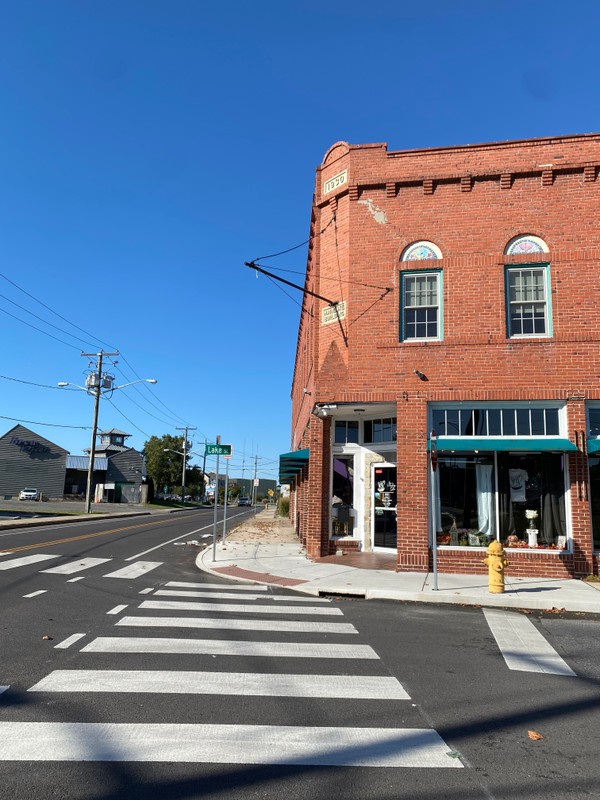
The Franklin Hotel building pictured flooded in the aftermath of the great storm of 1933. (1933 Flood of Main Street Photograph Collection 2007.062)
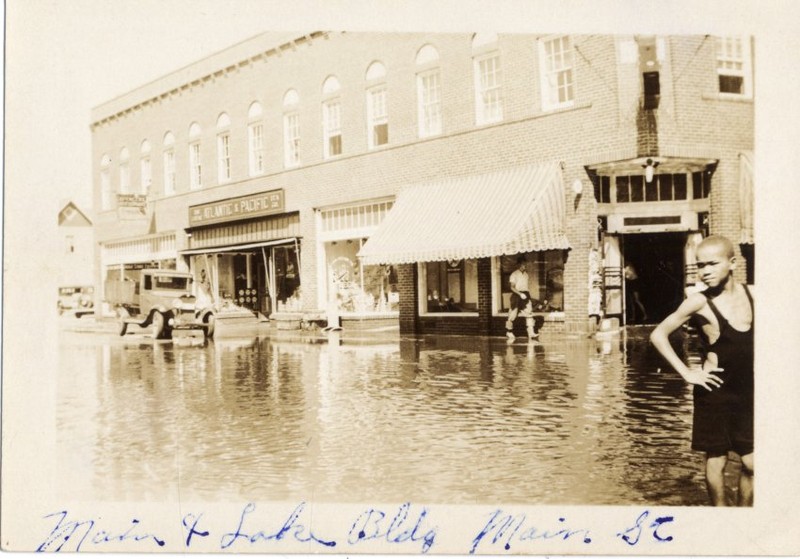
Aerial photograph looking from downtown Salisbury towards the Black entertainment and business district. (Walter Thurston Photograph Collection 2016.096.10008)
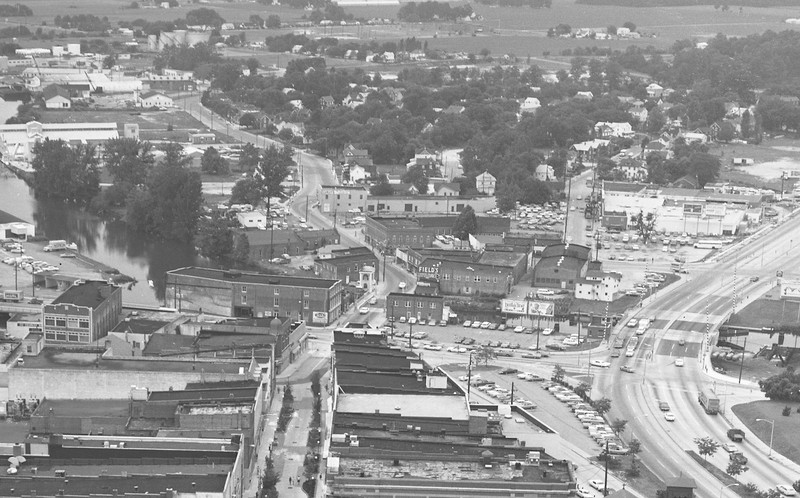
Two young boys are pictured playing in flood waters from the great storm of 1933 in front of the Citizen Club. The Citizen Club was another Black-owned club on Lake Street in the 50s and 60s. (Wicomico Historical Society Collection 2001.007)
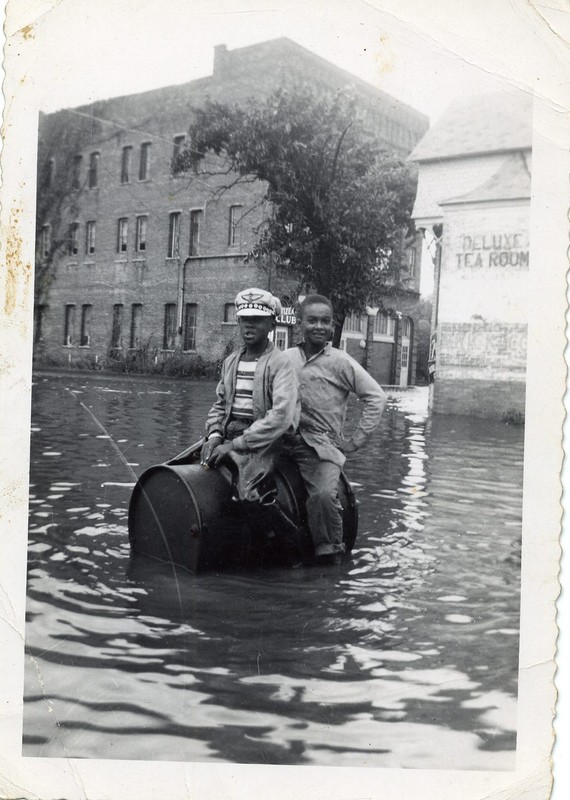
The facade of the Franklin Hotel pictured in disrepair around 1982-1983. (Office of Publication Photographs SUA-031)
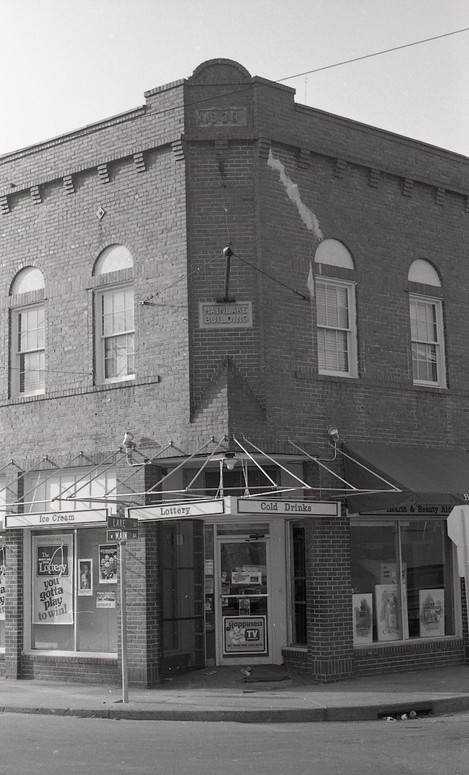
What was once Jim Weatherly's Postal Card restaurant, empty and deteriorated around 1982-1983. (Office of Publication Photographs SUA-031)
.jpg)
The Lock and Load Bar, once part of the Black entertainment and business district, pictured around 1982-1983. (Office of Publication Photographs SUA-031)
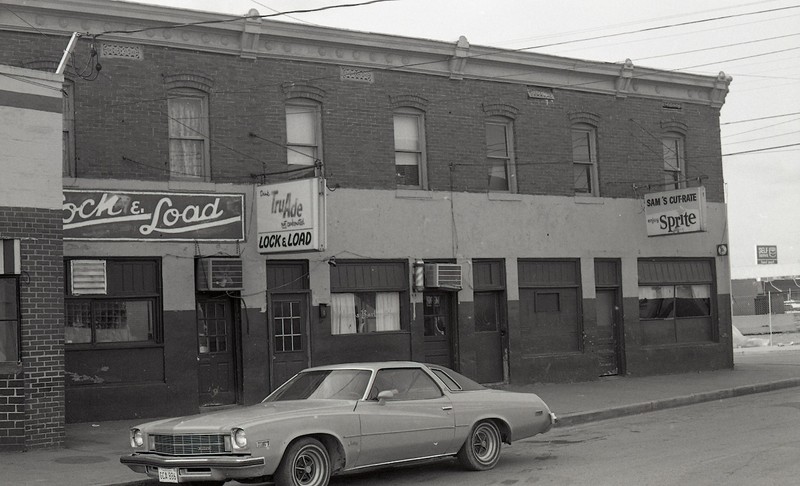
Backstory and Context
Text-to-speech Audio
In 1909 the Afro-American Ledger bragged of Salisbury citizens who were “prosperous and progressive”.[1] Black Salisburians owned and operated businesses and purchased their own homes, sometimes intermingling with white citizens in the community. Around this time, the Black entertainment and business district, part of the California and Jersey neighborhoods, was established. The versatility of this area was its ability to fit the needs of its community. Upon its opening, well-wishers boasted Zanzibar as “The Shore’s Newest Sizzling Sepia Hot Spot.”[2] As hip as the club was, it served the entire community by hosting events like a screening of the 1947 World Series film and a political rally for 500 veterans. Likewise, the Hi Hat Night Club had at least one slot machine, a cigarette vending machine, and hot entertainers, but also held events like a “Grand Ball” to sell bonds and hosted community meetings for local unions.[3] In 1948, Jim Weatherly owned multiple businesses on Lake Street, including a taxicab service and the Postal Card. A 1993 issue of The Daily Times describes, “The ‘Postal Card’ was a luncheonette; in the ‘Back’ was space for record hops and live bands; the ‘Budweiser’ was a beer garden, as such places were called in the days before hard liquor sales in the county; and upstairs was a pool hall.”[4]
At the height of the entertainment and business district, the Franklin Hotel opened to the public at the corner of West Main and Lake Streets on June 12, 1955. Advertised as a “Hotel for Negroes,” Melvin Hutt owned and operated the establishment with his wife, Donzelle.[5] The Franklin Hotel was significant in that it proudly advertised “23 air-conditioned rooms [with] wall-to-wall carpeting” for Black travelers who were not welcome in surrounding segregated hotels.[6] It was featured in the Green Book for Negro Motorists, a guide for Black travelers looking for safe spaces to eat, stay, and otherwise stop. Prior to becoming the Franklin Hotel, the building lodged performers such as Fats Domino and Etta James during the 1930s and 1940s, who would perform at Black establishments in the area.[7] The building hosted many businesses since its completion in 1930, including Billy Tryall’s Modern Studio of Dancing for Black Children in 1960. The Franklin Hotel building is the only reminder of what once was the flourishing Black entertainment and business district, and currently houses The Ugly Pie, Mad Hatter Café / The Looking Glass, and Airbnb units.
Fires were a reoccurring theme in the entertainment and business district, with the Ritz Theatre catching fire multiple times before it eventually burned down for good on February 16, 1963 and was subsequently demolished. Fire was not the neighborhood’s only issue, however. As detailed throughout The Daily Times, business owners and patrons of the area were frequently harassed by police. This included false accusations of communism in the Lake Street area by the city’s Chief of Police, William J. Chatham. In 1953, he claimed that “...[the] seed [of communism] was sown and it was taking root” and attested to arresting twenty-five people on the street each week when he first became chief.[8] This attention from Salisbury’s Police Department, as well as the opening of the new Salisbury Mall on October 16, 1968, influenced many white patrons to stay away from this section of Black owned businesses. The new mall, primely located off Route 50, lured many businesses and patrons away from Downtown Salisbury, and contributed further to the area’s decline.
Cite This Entry
Ian Post on behalf of Edward H. Nabb Research Center for Delmarva History and Culture. "The Entertainment District." Clio: Your Guide to History. January 24, 2022. Accessed March 31, 2025. https://theclio.com/tour/2090/7
Sources
[1] "Where Colored Folks Are Making Good," Afro-American Ledger, April 17, 1909, 1.
[2] Zanzibar, "Order of the Day," The Salisbury Times, May 1, 1947, 19.
[3] "1,000 Participate Here In Pythians' Parade," The Salisbury Times, July 17, 1944, evening edition, 4.
[4] George W. Roache, Jr., "The Tales Are Cyclical," The Daily Times, January 17, 1993, sec. Local, 4.
[5] "$75,000 Hotel For Negroes To Open Here," The Salisbury Times, June 11, 1955, evening edition, 1.
[6] "$75,000 Hotel For Negroes To Open Here," 1.
[7] Justina Coronel, "The Real Green Book's Connection to Salisbury," 47 ABC, February 28, 2019, https://www.wmdt.com/2019/02/the-real-green-books-connection-to-salisbury/
[8] "Communist Bid For Foothold Here Bared By Police Chief," The Salisbury Times, January 27, 1953, Evening edition, 1-2.
Allison B. Stancil
Edward H. Nabb Research Center
Edward H. Nabb Center
Edward H. Nabb Research Center
Edward H. Nabb Research Center
Edward H. Nabb Research Center
Edward H. Nabb Research Center

